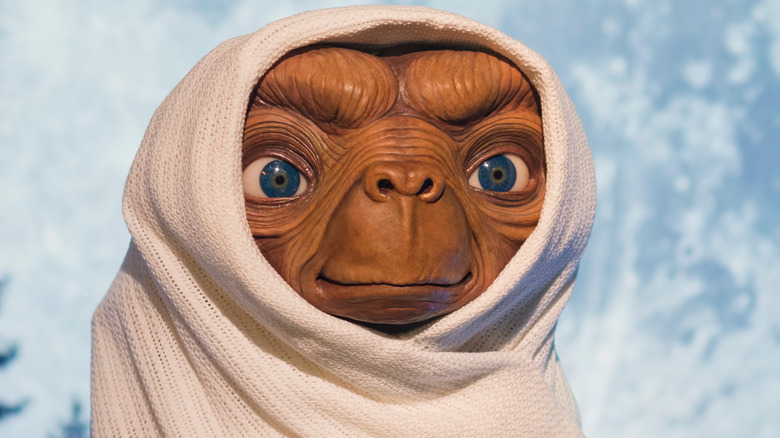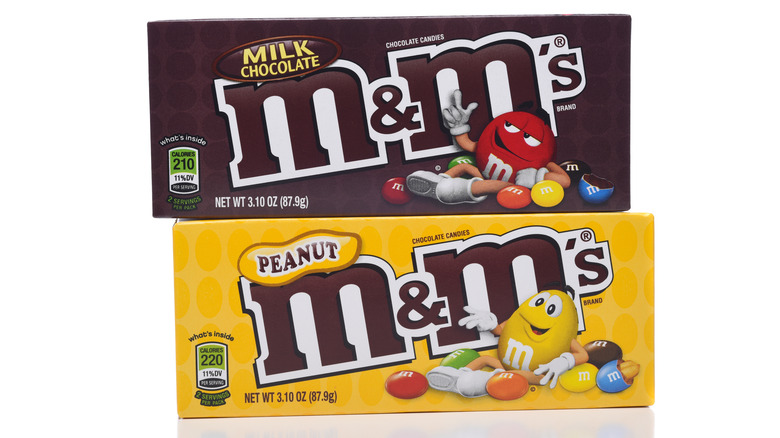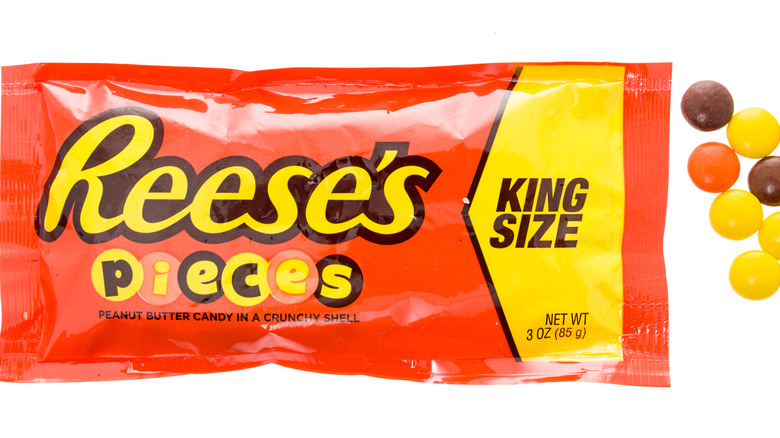The Candy That Almost Ended Up In E.T., And Why It Didn't
It's been 40 years since movie viewers first saw E.T. try to phone home in Steven Spielberg's classic alien film (via IMDb). Fans can easily recall other segments from the movie as well, from the iconic flying bike scene to E.T.'s glowing finger, but candy lovers remember something else — the trail of Reese's Pieces. What many fans don't know, though, is the story behind how this candy ended up in the film in the first place.
After all, the peanut butter-filled candy didn't make our most popular candy by state list or USA Today's most loved candy list. A couple of other bite-size candies did make the list, one of which was once considered Spielberg's favorite candy, according to ET.
If you were a movie director who wanted to include a specific candy in your film, you'd pick your favorite one, right? That's precisely what Spielberg planned to do for his film, but things didn't quite turn out the way he hoped, so he ended up using Reese's Pieces instead.
Spielberg wanted to use M&M's
In celebration of the film's 40th anniversary, ET featured a story revealing that the candy trail scene in the original screenplay of Spielberg's film included a different button-shaped, at Spielberg's request. It's the one that "melts in your mouth, not in your hand," chocolate-filled, colorful M&M's.
M&M's have been around since 1941, according to the timeline on the M&M's history webpage. They became a popular candy by the 1950s, which preceded the launch of peanut M&M's in 1954. By the '80s, the Mars, Inc.-owned candy expanded beyond the United States into other countries. Needless to say, the M&M's trademark was a pretty big deal at the time, and still is today.
The film's producer, Kathleen Kennedy, reached out to Mars, Inc. to request permission to use the candy in Spielberg's film, but they had a request in return. Well aware of their status and reputation, Mars, Inc. wanted to see the script first, but this posed a problem for Spielberg, according to ET.
Mars, Inc. hesitates and it costs them
Spielberg wanted to keep the details of his alien film a secret from the public, and Mars, Inc. was no exception, according to ET. No photos of the alien, no plot details, nada. This left the movie producer's proposal limited, leaving the candy company with a tough choice to make. Accept the request and risk tainting M&M's reputation (if the film bombed), or deny the request and risk losing profits?
Mars, Inc. didn't reply right away, and with time running out, Spielberg shifted his focus to his second-favorite candy, Reese's Pieces. The request was granted, and the decision marked the company's first partnership with Hollywood to promote a movie with one of their products, according to Hershey Community Archives.
The New York Times reported that "E.T. the Extra-Terrestrial" went on to gross $13 million for its June 1982 opening weekend, which equates to nearly $40 million in 2022 (via CPI Inflation Calculator). Before the film's release, Reese's Pieces wasn't a very well-known candy, since it had only been around since 1978 (via ET), unlike M&M's and its 40-year history. But according to Forbes, sales increased by 65% two weeks after the film's theater debut.
Although M&M's was Spielberg's first choice for his classic 1982 alien film, he never got permission to use the product, so Mars' loss led to Hershey's gain. And now, Reese's Pieces has replaced M&M's as Spielberg's favorite candy, according to E.T.


